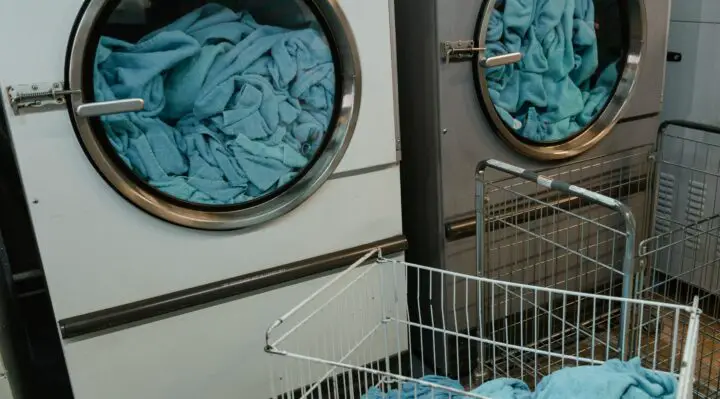If you are having trouble with your Maytag washing machine actuator, you’ve come to the right place. In this guide, we’ll be giving you steps on how to test and replace this part…

Table of Contents
How To Test Maytag Washing Machine Actuator — Quick Fix
Follow the steps below to test the actuator in your Maytag washing machine…
Step 1. Be sure to disconnect your appliance from the electrical outlet and turn the water faucets off before starting this procedure in order to avoid water leaks and electrical damage.
Step 2. Place some tape on the lid of your washer to secure it. Go to the back of the cabinet, then spread a towel underneath the inlet hoses in order to catch any leaks.
Step 3. Disconnect the two inlet hoses from the ports at the back of the washer. Pull the drain hose out of your home drain.
Step 4. Tip your washing machine forwards carefully, then set it on the floor. With a 5/16 inch socket wrench, take out the bolts holding the belt guard to the bottom of the tub.
Step 5. Using a Philips screwdriver, loosen the two screws holding the shift actuator to the transmission plate. Unplug the wire harness attached to the shift actuator.
Step 6. Get a multimeter, then turn the dial to the ohms setting. Place the probes on the multimeter in each of the actuator’s terminals. For a working actuator, you should get a reading between 2 and 6 ohms.
Step 7. If the reading is much higher or lower than these numbers, the part is defective. If you’ve determined that the shift actuator is in good condition, reconnect the wire harness.
Step 8. Remount the actuator on the transmission plate, then secure it by tightening the bolts using your nut-driver.
Step 9. Carefully lift your washing machine back onto its feet, then peel the tape off the lid. Reinsert the drain hose into your home drain.
Step 10. Reconnect the COLD and HOT water supply hoses to their appropriate ports. Reconnect you’re appliance to the electrical outlet, then turn the water taps back on.
Check out these other articles…
Whirlpool Washing Machine Smells [Proven Solutions]
Maytag Washing Machine Bearings [Problems, Solutions & Guide]
Maytag Washing Machine Belt [Problems, Solutions & Guide]
Clothes Stuck In A Maytag Washer [How To Fix]
Maytag Washing Machine Agitator [Problems, Solutions & Guide]
How To Replace Maytag Washing Machine Actuator — Solved
To replace your Maytag washing machine actuator, follow the steps below…
Step 1. Prevent water leaks and electrocution by disconnecting your washer from the power outlet and turning the water taps off before starting this repair.
Step 2. Pull your washer’s drain hose out of the standpipe. Using pliers if needed, disconnect the water supply hoses from the ports at the back of the machine (some water may spill out, so ensure that you keep a rag nearby).
Step 3. Put some tape on your washing machine’s lid to help secure it. Tip your washing machine forwards carefully and set it on the floor.
Step 4. Loosen the bolts holding the belt guard to the bottom of the tub using your 5/16 inch nut-driver.
Step 5. Unplug the wire harness connected to the shift actuator. Loosen the screws holding the actuator to the transmission plate using a Philips screwdriver.
Step 6. Discard the shift actuator, then take the new one out of its packaging. Plug the wire harness into the new actuator.
Step 7. Mount the new actuator on the transmission plate, then use your Philips screwdriver to tighten the bolts.
Step 8. Put the belt guard back on, then secure it by tightening the bolts with your 5/16 inch nut-driver.
Step 9. Lift the machine back onto its feet. Peel the tape off your washer’s lid, then reinsert the drain hose into the home drain.
Step 10. Attach each of the water inlet hoses to their corresponding ports at the back of the machine (ensure that both hoses are properly secured in order to prevent leaks).
Step 11. Turn your washer’s water faucets back on, then plug the power cord into the electrical outlet. Ensure that the machine works properly by running a cycle.